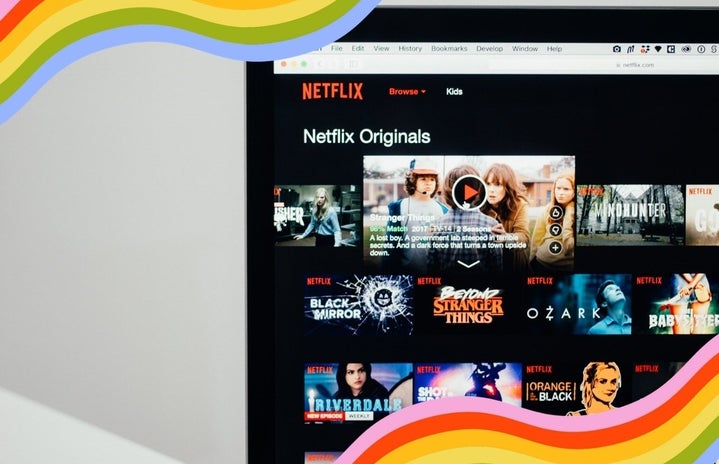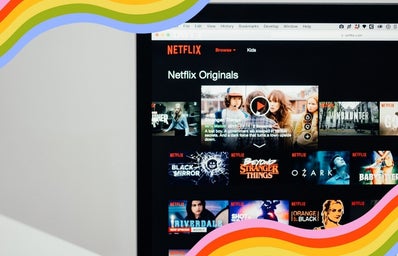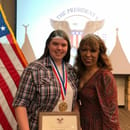When taking a right turn into 2010, the TV and film industry began taking bigger leaps into spreading acknowledgment, acceptance, appreciation, and visibility for the LGBTQ+ community through its productions. As we creep closer to closing out 2020 and this decade of innovation, growth, struggle, and healing, let’s take a moment to rewind and relive the wonderful examples of LGBTQ+ visibility that we’ve witnessed in the last ten years.
Grey’s Anatomy
With its LGBTQ+ representation making the first appearance with Dr. Callie Torres in Season 5 (2009), Seasons 6 through 17 have graced viewers and fans with visibility for bisexuals, gay men, lesbians, and transgender men, while enhancing awareness for non-LGBTQ+ viewers. Through the series famous for its pain and love, catastrophe and overcoming, fans have experienced budding romances, a wedding and divorce, confessions of love and lust, and even rapid onset heartbreak — all through our screens at home. The relationship between Dr. Arizona Robbins and Dr. Callie Torres, a lesbian and a bisexual, respectively, despite ending in divorce and a child custody battle, was raved for by fans, saying it was breaking stereotypes and the story flowed without force or excessive mention throughout the seasons. In later seasons, the Grey’s writers also explore characters of non-binary identities, through patient appearances, and a transgender man through Dr. Casey Parker. The recent season left fans waiting for what’s next, with a major cliffhanger in the relationship between Dr. Carina Deluca and Station 19’s Captain Maya Bishop.
The Fosters
From the beginning, The Fosters defied mainstream TV by primarily featuring the story of an unconventional family, led by lesbian wives. Stef and Lena, through combining Stef’s biological son, adopting a pair of fraternal twins, and adopting a brother and sister, created a family of acceptance, support, and unconditional love. Throughout its 5 seasons, other LGBTQ+ characters were also featured in full time and recurring roles. Jude, biological younger brother to Callie, and one of the last two children adopted into the Adams Foster family, at 14 years old comes out as gay in Season 3. In addition to visibility in terms of sexuality, two recurring transgender men are featured — Cole in Season 1 and Aaron in Seasons 4 and 5. While pioneering as an LGBTQ+ headlining program, complex and serious topics like sex education, immigration, and school shootings are covered in sensitive and compassionate tones. Though wrapping up its fifth and final season in 2017, the spin-off series Good Trouble has fostered many more positive features of LGTBQ+ characters with the same compassionate tone as the original series did.
Wynonna Earp
Despite still being considered a young program, Syfy’s hit paranormal western series is currently airing its fourth season, with fans raging via social media and convention for production to continue through future seasons. With an LGBTQ+ component developing within the first half of Season 1, this Canadian-American production served as a platform for the comforting and passionate ship, Wayhaught, to blossom through their fandom. Though the primary plot follows a demon killer armed with a generations-old long barrel revolver named Peacemaker, the emotional side of the show largely comes through via Waverly Earp, a newly realized bisexual, and Deputy Sheriff Nicole Haught, a headstrong and confident lesbian. During Seasons 1 through 3, the hearts of fans are roped in as the lives of both beautiful and powerful women are threatened, risked, and saved, with the mid-season finale of Season 4 closing with a long-awaited proposal. In addition to the lesbian and bisexual representation, a gay romance blooms between a full-time character and a supporting character. Production of the series, and the rapidly spreading fandom, provided two front running actresses the safe place and support network to publicly come out as part of the community they represented on-screen. Dominique Provost-Chalkley, who plays Waverly Earp, the soft-hearted yet ever-resilient younger sister to the show’s face, Wynonna Earp, came out as queer in March 2020. Soon following her on-screen true love, Kat Barrell, who plays now Sheriff Nicole Haught, came out as bisexual in July 2020.
Though the growing representation of the LGBTQ+ community spans beyond ABC’s Grey’s Anatomy, Freeform’s The Fosters, and Syfy’s Wynonna Earp, these shows host a fraction of the visibility that has been cultivated throughout the decade. Stay tuned for Part 2 where we will dive head first into the science fiction series of the twenty-teens.



